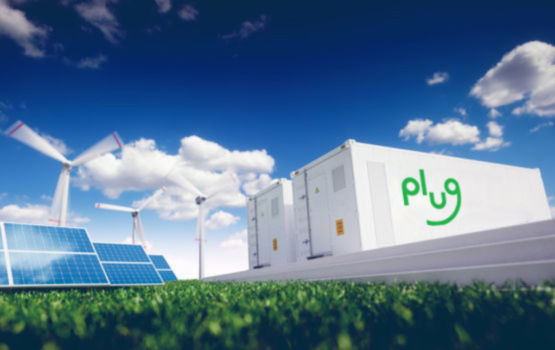Green Hydrogen Production is Paramount
One of the keys to growing the future hydrogen economy is the ability to cost-effectively provide large-scale, zero-carbon “green” hydrogen. Hydrogen can be produced by renewable sources like wind and solar energy. We’re projecting using more than 80 tons of hydrogen in 2024, and have made a commitment to achieve 50% green content.
Electrolysis
Today, hydrogen is being harvested from water through electrolysis using grid or renewable power sources. In the future, the cost of electrolysis will decrease significantly through continued adoption and innovation of the technology, as well as efficiency improvements that will spur the green hydrogen economy.
Read Plug’s California Green Hydrogen Plant Saves Water, Creates New Energy Source
Thermal Reforming of Renewable Hydrocarbon Feedstocks
The most common hydrogen production method today is high temperature, high pressure, steam-methane reforming of natural gas. Renewable natural gas is beginning to be a more common feedstock.
In the future, low-carbon renewable natural gas, upgraded from bio- and waste-based sources, will be the primary feedstock for clean hydrogen production through reformation. Such sources include landfill gas, wastewater treatment off-gas, agricultural waste gases, and anaerobic manure digesters. This is how we use societal by-products for good.
Thermal Reforming With Carbon-Capture
Currently, capturing carbon emissions after steam reforming natural gas is only beginning to be developed. In the future, carbon capture can add a meaningful percentage of clean hydrogen production. The International Energy Agency’s Sustainable Development Scenario proposes 400 million metric tons per year of CO2 sequestration by 2030. Fully decarbonized hydrogen can lead to very low emissions for fuel production.
By-Product Hydrogen Recovery
Today, a relatively small number of industrial process companies are splitting off the hydrogen from their by-product streams, purifying it, and using it to provide power and heat for their facilities.
In the future, this business line could grow significantly. The hydrogen could be sold to other hydrogen users or could be used to enhance production in other parts of their plants.
